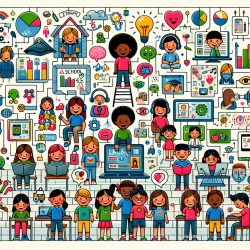Children with sex chromosome trisomy (SCT), including XXY, XXX, and XYY karyotypes, are at a higher risk for language difficulties. According to a recent study published in Child Neuropsychology, these difficulties can be identified as early as one year of age and persist across various language domains. As a practitioner, understanding and implementing the findings of this study can significantly enhance your ability to support children with SCT in developing their language skills.
Key findings from the study highlight the importance of early intervention. Children with SCT exhibited challenges in:
- Nonverbal communication, such as gestures.
- Early vocabulary development.
- Semantic skills, both receptive and expressive.
- Syntax and phonological processing (in older children).
To implement these findings effectively, consider the following strategies:
1. Early Screening and Assessment
Regular screening for language development from infancy can help identify children at risk. Use tools like the MacArthur-Bates Communicative Development Inventories (CDI) for early assessment of nonverbal communication and vocabulary.
2. Tailored Intervention Programs
Design intervention programs that address specific language domains, such as receptive and expressive vocabulary, semantics, and syntax. Early intervention can mitigate more severe language difficulties later in life.
3. Parental Involvement
Engage parents in the intervention process. Educate them on how to support their child's language development at home through activities that promote communication and vocabulary growth.
4. Continuous Monitoring
Monitor the child's progress regularly to adjust intervention strategies as needed. This ongoing assessment ensures that the intervention remains effective and responsive to the child's evolving needs.
Implementing these strategies can lead to better language outcomes for children with SCT, enhancing their overall development and quality of life. For more detailed information and to read the original research paper, please follow this link: A cross-sectional study of early language abilities in children with sex chromosome trisomy (XXY, XXX, XYY) aged 1–6 years.










